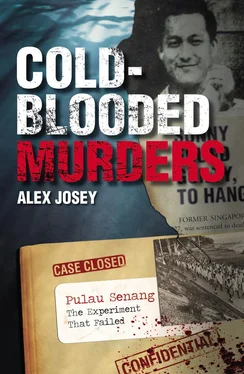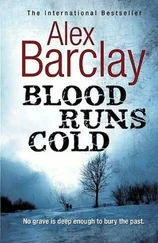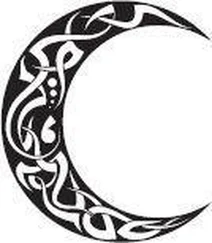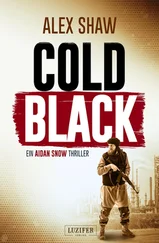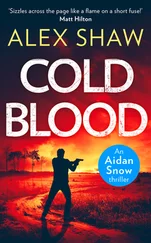Alex Josey - Cold blooded murders
Здесь есть возможность читать онлайн «Alex Josey - Cold blooded murders» весь текст электронной книги совершенно бесплатно (целиком полную версию без сокращений). В некоторых случаях можно слушать аудио, скачать через торрент в формате fb2 и присутствует краткое содержание. Жанр: Криминальный детектив, на английском языке. Описание произведения, (предисловие) а так же отзывы посетителей доступны на портале библиотеки ЛибКат.
- Название:Cold blooded murders
- Автор:
- Жанр:
- Год:неизвестен
- ISBN:нет данных
- Рейтинг книги:5 / 5. Голосов: 1
-
Избранное:Добавить в избранное
- Отзывы:
-
Ваша оценка:
- 100
- 1
- 2
- 3
- 4
- 5
Cold blooded murders: краткое содержание, описание и аннотация
Предлагаем к чтению аннотацию, описание, краткое содержание или предисловие (зависит от того, что написал сам автор книги «Cold blooded murders»). Если вы не нашли необходимую информацию о книге — напишите в комментариях, мы постараемся отыскать её.
Cold blooded murders — читать онлайн бесплатно полную книгу (весь текст) целиком
Ниже представлен текст книги, разбитый по страницам. Система сохранения места последней прочитанной страницы, позволяет с удобством читать онлайн бесплатно книгу «Cold blooded murders», без необходимости каждый раз заново искать на чём Вы остановились. Поставьте закладку, и сможете в любой момент перейти на страницу, на которой закончили чтение.
Интервал:
Закладка:
The jetty was 400 feet long, and, as Major James explained during the trial, it was necessary to work on it at various odd hours because there is a straits between Pulau Senang and the neighbouring island of Pulau Pawai. There is an extremely strong tide between the two islands, and in building the jetty, Dutton was dependent entirely on the state of the tide. With improvised equipment, the men could only work at low tide. If the tide was low at night, they would work at night. It was not work that could be done at regular working hours. Work depended entirely on tide. Besides, Dutton believed in work.
James felt that Pulau Senang had reached the stage when the detainees had the best amenities that he had ever seen in any prison anywhere, and in 21 years of service, he had been to many prisons in various parts of the world. They had cinema, educational facilities, recreational facilities, good accommodation, laundry, workshops and canteen. James felt that the need for long working hours was over. The original enthusiasm for building could not be the same: the men could no longer see any reason for long working hours.
Dutton thought otherwise. Pulau Senang was not built to be enjoyed. That was not the purpose of the open-prison settlement. Dutton believed fervently that the men’s salvation was hard work.
A defence counsel got Major James to admit that he had ordered Dutton to reduce the working hours. The detainees knew this (there were few secrets on the island). The defence counsel asked James whether Dutton was setting a proper example to those he was trying to teach to respect law and order when Dutton himself disregarded orders. James denied the suggestion that Dutton flagrantly disobeyed orders. He had given Dutton considerable discretion. Dutton was the man on the spot. Pulau Senang was a place where time and tide waited for no man. Things had to be done. Chickens had to be fed, emergency work done. But the type of man on Pulau Senang was a man not liking work. Many people were in prison because they were lazy. Some joined secret societies because they were lazy. James said that no detainee had ever protested or complained to him about working hours, and every prisoner knew he had the right to approach the Director of Prisons with serious complaints.
At 11:30 AM on 12 July, the detainees stopped for lunch. Shortly after the start-work gong struck at 12:40 PM, they were mustered for gardening and issued with cangkuls and parangs. On an arranged signal, the riot began. Some of the rioters attacked the warders. Others made for the radio room where Dutton and his chief officer, J.W. Tailford, had stationed themselves. By now, the warning siren was blaring. By the time the riot squad arrived, inside the hour, Dutton and two others were dead and a third fatally injured. The settlement was in ruins. The final drama had come when the rioters beseiged the administrative block, the settlement’s nerve centre. Outnumbered, the prison staff were overwhelmed. Soon buildings were ablaze. Dutton, seriously injured, alone and helpless, was cornered in his office. Rioters tore a hole in the roof and poured petrol on him and tossed in fire to set him alight. Dutton rushed outside, his clothing in flames, and four rioters with axes and cangkuls finished him off. A rioter’s shirt, stained with Dutton’s blood, was set up on the mast, and as the body of Dutton burned, the rioters played music on a guitar and sang and danced.
None of the detainees was killed during the riot. In fact, only six suffered superficial head injuries. They received attention at the prison hospital. All six had previous records of misconduct on the island.
During the trial, Major James disagreed with the defence’s contention that violence on the island had been an outburst of human intolerance. He denied Dutton was a slave driver. He was one of the kindest men James had ever met. He was a natural leader. If there was any good in a man, Dutton would bring it out. He was an extremely humane person. He often called upon James to help men released from Pulau Senang. If a detainee had trouble at home, Dutton would seek James’ help in sorting it out. Defence counsel asked James whether it was not a fact that the outburst had been a demonstration of personal hatred of Dutton.
James denied this. He said: “Dutton had to be, had the misfortune to be, the living embodiment of a system affecting their lives on Pulau Senang. He represented the authority of the Singapore Government, and, in my opinion, that holocaust was directly directed against the Singapore Government and the system that detained them.” Dutton represented a system, a better way of life to which these men, ‘the scum of Singapore’, were antagonistic. “They couldn’t stand a system which took them out of their unpleasant habits.”
Major James’ explanation of the savage riot was that the rioters knew that prison accommodation in the State of Singapore was at an absolute premium. They knew that a prison with accommodation for 2,000 prisoners was being pulled down (Outram Road Prison). They knew that one man, and one man alone, in the State Prison Service could build Pulau Senang. They thought that if this man, Daniel Dutton, was done away with, and the place destroyed, the Singapore Government would find it extremely difficult to contain them. They might have to release them.
No proof was ever forthcoming that this was in fact the motive behind the revolt, but during the trial, a former secret society leader and a detainee, both prosecution witnesses, revealed that a meeting of seven secret society leaders on 6 July decided that Dutton must be liquidated and Pulau Senang razed to the ground.
Among those at the meeting of seven was Tan Kheng Ann. Dutton spent long hours in the evening with him. Dutton believed Tan had reformed. An informer warned Dutton against Tan, but Dutton laughed. He rather liked Tan. In the end Tan was one of the men who killed him.
Retribution
When the riot squad arrived, they met with no resistance. The rioters threw aside their weapons and obeyed orders. They were taken away to Changi Prison. Six weeks later, on 26 August 1963, 71 detainees stood before the Fourth Magistrate, Khoo Hin Hiong, each charged with four counts of murder, one of attempted murder, and one of mischief by causing fire. Forty-seven photographs of damaged buildings and bodies of the murdered officers were produced. One picture showed a guitar among a pile of tyres. “Evidence will show,” said the Public Prosecutor, “that these people were singing and celebrating the holocaust.” Lee Meow Cheng, a settlement attendant, told the Court that the rioters had held a victory celebration. “Some of them changed into new clothes for the celebration. They strutted about like conquerors of Pulau Senang,” said Lee.
Low Ah Kow, a settlement assistant, gave the Court a detailed account of what happened. He said that at 12:15 pm that day, he and other officers fell in outside the guard room and were informed by Tailford, the chief officer, that trouble was expected. They were instructed that when the siren sounded, they were to fall in again outside the guard room. Tailford then dismissed them. Low went off to the mess room, where he was detailed to look after Halls, A, B, C and D. Another settlement officer was told to look after Halls E, F, G and H. Low heard the work-gong sound at 12:50 pm and then shortly after, while standing outside Hall A, he heard the three short blasts of the alarm siren. He saw a large group of detainees approaching him: they were armed with cangkuls, parangs, pipes and other weapons. They were led by the gang leader, Tan Kheng Ann, alias Robert. His prison number was 860/60. He had a parang in his hand. They charged towards the mess room, but made no attempt to assault him.
A group of rioters had surrounded Choo Ah Kim, another settlement assistant. He looked as though he was suffering from shock. Then Low saw an unarmed group of detainees rush into the armed mob to rescue Choo and carry him into the administrative block. Low himself went with them as far as the prison hospital to get some medicine. While he was inside the hospital, he saw, across the road, three armed rioters smash the petrol pump lock and draw some of the fuel, then run off towards the store. While still in the hospital grounds he heard a voice yell: “Bobby! Cut the radio wire!” Later, he saw Bobby (whom he identified as Lim Tee Kang) running towards the radio wire and cut it with an axe.
Читать дальшеИнтервал:
Закладка:
Похожие книги на «Cold blooded murders»
Представляем Вашему вниманию похожие книги на «Cold blooded murders» списком для выбора. Мы отобрали схожую по названию и смыслу литературу в надежде предоставить читателям больше вариантов отыскать новые, интересные, ещё непрочитанные произведения.
Обсуждение, отзывы о книге «Cold blooded murders» и просто собственные мнения читателей. Оставьте ваши комментарии, напишите, что Вы думаете о произведении, его смысле или главных героях. Укажите что конкретно понравилось, а что нет, и почему Вы так считаете.
